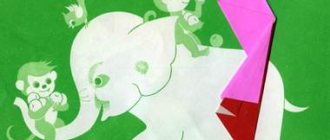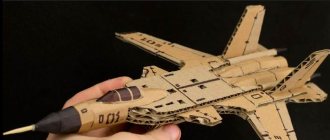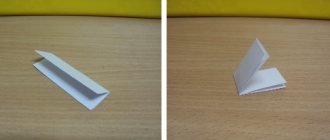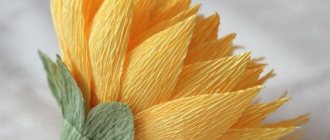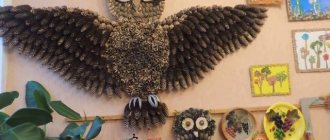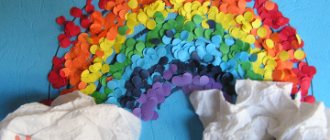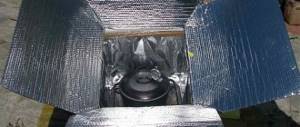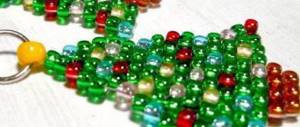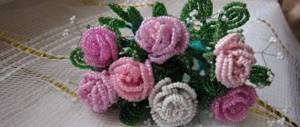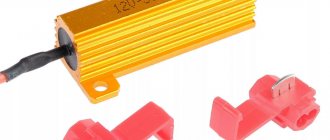How to make three-dimensional geometric shapes from paper (diagrams, templates)?
Here are several schemes by which you can make three-dimensional geometric shapes.
The simplest one is a tetrahedron .
It will be a little more difficult to make an octahedron .
But this three-dimensional figure is a dodecahedron .
Another one is the icosahedron .
More details about making three-dimensional figures can be found here.
This is what three-dimensional figures look like when not assembled:
And this is what the finished ones look like:
You can make many original crafts from volumetric geometric shapes, including gift wrapping.
So that children can better remember what geometric shapes are and know what they are called, you can make three-dimensional geometric shapes . By the way, you can use them to make beautiful gift wrapping.
- thick paper or cardboard (preferably colored);
- ruler;
- pencil;
- scissors;
- glue (preferably PVA).
The most difficult thing is to develop and draw developments; you need at least basic knowledge of drawing. You can take ready-made scans and print them on a printer.
To keep the fold line straight and sharp, you can use a blunt needle and a metal ruler. When drawing a line, the needle must be bent strongly in the direction of movement, almost laying it on its side.
This is a development of a trihedral pyramid
This is a cube scan
This is the development of an octahedron (tetrahedral pyramid)
This is the development of a dodecahedron
This is the development of an icosahedron
Here you can find templates for more complex figures (Platonic Solids, Archimedean Solids, polyhedra, polyhedra, different types of pyramids and prisms, simple and oblique paper models).
By the way, to calculate the parameters of the pyramid, you can use this program.
By making three-dimensional figures from paper yourself, you can not only use them for entertainment, but also for learning.
For example, you can clearly show your child what a particular figure looks like and let him hold it in his hands.
Or you can print out diagrams with special symbols for training purposes.
So I suggest below that you familiarize yourself with the dodecahedron , both simple and with small drawings that will only attract the baby’s attention and make learning more fun and entertaining.
cube diagram can also be used to teach numbers.
pyramid diagram can help you learn the formulas that apply to a given figure.
In addition, I suggest you familiarize yourself with the diagram of the octahedron .
tetrahedron diagram will also help you learn colors.
As you understand, the above templates must be printed, cut out, bent along the lines, and glued along special narrow strips adjacent to selected sides.
Before you start making three-dimensional geometric shapes, you need to imagine (or know what it looks like) the figure in 3D dimension: how many faces does this or that figure have.
First you need to correctly draw a figure on paper along the edges that must be connected to each other. Each shape has edges that have a specific shape: square, triangle, rectangle, rhombus, hexagon, circle, etc.
It is very important that the length of the edges of the figure that will be connected to each other are the same length, so that no problems arise during the connection. If the figure consists of identical faces, I would suggest making a template while drawing and using this template. You can also download ready-made templates from the Internet, print them, bend them along the lines and connect (glue) them together.
Examples of problems with solutions
Here are some tasks found on state final exams in mathematics.
Exercise 1.
Sand is poured into a box shaped like a regular quadrangular prism. The height of its level is 10 cm. What will the sand level be if you move it into a container of the same shape, but with a base twice as long?
It should be reasoned as follows. The amount of sand in the first and second containers did not change, i.e. its volume in them is the same. The length of the base can be denoted by a
. In this case, for the first box the volume of the substance will be:
V₁ = ha² = 10a²
For the second box the base length is 2a
, but the height of the sand level is unknown:
V₂ = h (2a)² = 4ha²
Since V₁ = V₂
, we can equate the expressions:
10a² = 4ha²
After reducing both sides of the equation by a², we get:
As a result, the new sand level will be h = 10 / 4 = 2.5
cm.
Task 2.
ABCDA₁B₁C₁D₁ is a correct prism. It is known that BD = AB₁ = 6√2. Find the total surface area of the body.
To make it easier to understand which elements are known, you can draw a figure.
Since we are talking about a regular prism, we can conclude that at the base there is a square with a diagonal of 6√2. The diagonal of the side face has the same size, therefore, the side face also has the shape of a square equal to the base. It turns out that all three dimensions - length, width and height - are equal. We can conclude that ABCDA₁B₁C₁D₁ is a cube.
The length of any edge is determined through a known diagonal:
a = d / √2 = 6√2 / √2 = 6
The total surface area is found using the formula for a cube:
Sfull = 6a² = 6 6² = 216
Task 3.
The room is being renovated. It is known that its floor has the shape of a square with an area of 9 m². The height of the room is 2.5 m. What is the lowest cost of wallpapering a room if 1 m² costs 50 rubles?
Since the floor and ceiling are squares, i.e. regular quadrangles, and its walls are perpendicular to horizontal surfaces, we can conclude that it is a regular prism. It is necessary to determine the area of its lateral surface.
The length of the room is a = √9 = 3
m.
Sside = 4 3 2.5 = 30 m² will be covered with wallpaper.
.
The lowest cost of wallpaper for this room will be 50·30 = 1500
rubles
Thus, to solve problems involving a rectangular prism, it is enough to be able to calculate the area and perimeter of a square and rectangle, as well as to know the formulas for finding the volume and surface area.
Development of geometric shapes
Large selection of developments of simple geometric shapes.
Children's first introduction to paper modeling always begins with simple geometric shapes such as cubes and pyramids. Not many people succeed in gluing a cube together the first time; sometimes it takes several days to make a truly even and flawless cube. More complex figures, a cylinder and a cone, require several times more effort than a simple cube. If you don’t know how to carefully glue geometric shapes, then it’s too early for you to take on complex models. Do it yourself and teach your children how to do these “basics” of modeling using ready-made patterns.
To begin with, I, of course, suggest learning how to glue a regular cube. The developments are made for two cubes, large and small. A small cube is a more complex figure because it is more difficult to glue than a large one.
So, let's begin! Download the developments of all the figures on five sheets and print them on thick paper. Before printing and gluing geometric shapes, be sure to read the article on how to choose paper and how to properly cut, bend and glue paper.
For better quality printing, I advise you to use the AutoCAD program, and I give you patterns for this program, and also read how to print from AutoCAD. Cut out the development of the cubes from the first sheet, be sure to draw a compass needle under the iron ruler along the fold lines so that the paper bends well. Now you can start gluing the cubes.
To save paper and just in case, I made several unfolds of a small cube, you never want to glue more than one cube together or something won’t work out the first time. Another simple figure is a pyramid, its development can be found on the second sheet. The ancient Egyptians built similar pyramids, although not made of paper and not so small in size
